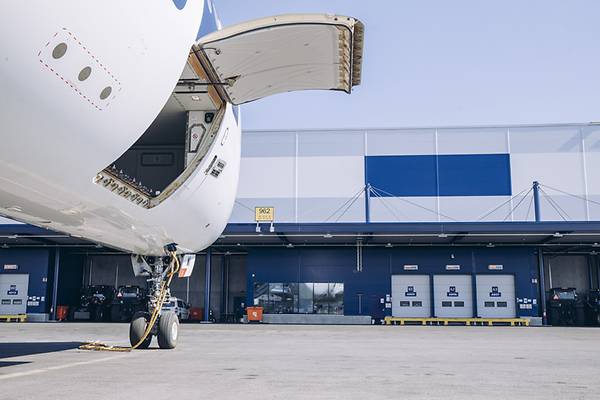Cargo news


New CEIV certification for Finnair Cargo's COOL Terminal at Helsinki Airport
One of the most modern cargo facilities in Europe, Finnair Cargo’s COOL Nordic terminal is now CEIV certified, meeting industry-wide standards for ensuring that pharmaceuticals remain temperature-controlled throughout the cold-chain cycle.
Finnair Cargo was the first airline in the world to be awarded the prestigious CEIV pharma certificate by IATA. Now Finnair Cargo's home base, the COOL Nordic cargo hub in Helsinki – opened in 2018 – has passed the CEIV pharma audit. The 31,000-metre² terminal (360° view) focusses on temperature-sensitive and high-value cargo shipments between Europe and Asia and is one of the world's newest air cargo hubs.
“It’s very important that Finnair Cargo is part of the IATA CEIV programme,” says Mika Kilpinen, development lead, operations, quality and compliance at Finnair Cargo.
Kilpinen oversaw the months-long CEIV certification process, along with Finnair Cargo pharma expert and manager of cargo standards, Henry Rantala.
“We want to be part of improving the process and developing standards for pharma handling. As the handling becomes better and better and sensors and data advance, Finnair Cargo wants to be in the lead.”
COOL was designed and built with CEIV Pharma standards in mind
Designed and built around the specifications laid out by IATA to avoid spoilage of medicines and other perishables, the state-of-the-art COOL Nordic terminal exemplifies the ways in which Finnair Cargo has made itself part of the solution.
COOL boasts new technology, numerous sensors, and 24-hour real-time temperature monitoring from a supervised control room. The terminal also has dedicated areas reserved for perishables and pharmaceuticals. The pharmaceutical area (360° view) maintains different temperature ranges depending on the sector. CRT goods are kept at a controlled room temperature of 20°, refrigerated goods at 5° and frozen goods at -21°.
“The terminal's separate pharma and perishable facilities have 100% temperature and location monitoring. There’s bulletproof monitoring inside the terminal,” says Kilpinen.
The temperature-control technology combined with enhancements in the acceptance and handling processes assures product integrity throughout the air transport process. That is especially important for Finnair Cargo’s work with the pharmaceuticals industry where incorrect temperatures can lead to the rejection of shipments of medicines.
As Finnair Cargo has already received airline CEIV Pharma certification, this terminal certification goes one step further toward offering end-to-end CEIV certified air transport of pharmaceuticals when shipping to and from any of the 18 CEIV pharma certified stations via Helsinki. Helsinki, likewise, has the added benefit of shorter tarmac times due to the location of the COOL terminal and the airport’s compact size.
“Tarmac transportation from the aircraft side to the terminal is much shorter due to the COOL terminal’s location close to aircraft stands,” says Kilpinen. That reduced time during handling when the cargo is outside is vital for temperature-controlled goods, including pharmaceuticals.
CEIV is a thorough certification process
While the €80 million COOL terminal was constructed with CEIV certification requirements in mind, completing the certification process took several months. With a checklist comprising 277 items, the team led by Rantala and Kilpinen had to provide IATA with reams of documentation that were created from scratch once the terminal was opened.
Among the most vital yet time-consuming steps on the checklist was a complete temperature mapping of the terminal which considered both standard and worst-case scenarios into account.
“For the mapping, we had to role play different scenarios: what happens if we open the door for 30 minutes,; what is the impact of an electrical outage; where does the heat go,” says Kilpinen. “That process and data analysis took nearly a month before we could deliver a 45-page report to IATA for approval.”
Other items on the checklist that needed to be completed before an audit by IATA included writing a manual outlining the safe and proper handling processes for pharmaceuticals at the terminal. This documentation ensures that consistent standards are applied during handling processes to assure product integrity.
That is one of the aims that IATA had in mind when they launched the CEIV certifications in 2014. On June 30, 2015, Finnair Cargo became the first airline to receive the CEIV Pharma certification – an industry-wide standard that has now been embraced by more than 160 companies. The certification sets stipulations for the safe transport of pharmaceuticals that go above and beyond the standards laid out by the US, the EU and the World Health Organization.